Alexander Calder (/ˈkɔːldər/; July 22, 1898 – November 11, 1976) was an American sculptor who is best known for his innovative mobiles (kinetic sculptures powered by motors or air currents) that embrace chance in their aesthetic and his monumental public sculptures. Born into a family of artists, Calder's work first gained attention in Paris in the 1920s and was soon championed by the Museum of Modern Art in New York, resulting in a retrospective exhibition in 1943. Major retrospectives were also held at the Solomon R. Guggenheim Museum (1964) and the Museum of Contemporary Art, Chicago (1974).
Calder's work is in many permanent collections, most notably in the Whitney Museum of American Art, but also the Guggenheim Museum; the Museum of Modern Art; the National Gallery of Art, Washington, D.C.; and the Centre Georges Pompidou. He produced many large public works, including .125 (at JFK Airport, 1957), Pittsburgh (Carnegie International prize winner 1958, Pittsburgh International Airport) Spirale (UNESCO in Paris, 1958), Flamingo and Universe (both in Chicago, 1974), and Mountains and Clouds (Hart Senate Office Building, Washington, D.C., 1996).
Although primarily known for his sculpture, Calder also created paintings and prints, miniatures (such as his famous Cirque Calder), theater set design, jewelry design, tapestries and rugs, and political posters.[1] Calder was honored by the US Postal Service with a set of five 32-cent stamps in 1998, and received the Presidential Medal of Freedom, posthumously in 1977, after refusing to receive it from Gerald Ford one year earlier in protest of the Vietnam War.
Contents
Early life[edit]
Alexander "Sandy" Calder was born in 1898 in Lawnton, Pennsylvania.[2] His actual birthday, however, remains a source of confusion. According to Calder's mother, Nanette (née Lederer), Calder was born on August 22, yet his birth certificate at Philadelphia City Hall, based on a hand-written ledger, stated July 22. When Calder's family learned about the birth certificate, they reasserted with certainty that city officials had made a mistake.
Calder's grandfather, sculptor Alexander Milne Calder, was born in Scotland, had immigrated to Philadelphia in 1868, and is best known for the colossal statue of William Penn on top of Philadelphia City Hall's tower. His father, Alexander Stirling Calder, was a well-known sculptor who created many public installations, a majority of them in nearby Philadelphia. Calder's mother was a professional portrait artist, who had studied at the Académie Julian and the Sorbonne in Paris from around 1888 until 1893. She moved to Philadelphia, where she met Stirling Calder while studying at the Pennsylvania Academy of the Fine Arts. Calder's parents married on February 22, 1895. Alexander Calder's sister, Mrs. Margaret Calder Hayes, was instrumental in the development of the UC Berkeley Art Museum.[3]
In 1902, Calder posed nude for his father's sculpture The Man Cub, a cast of which is now located in the Metropolitan Museum of Art in New York City. That same year he also completed his earliest sculpture, a clay elephant.[4] Three years later, Alexander's father contracted tuberculosis, and Calder's parents moved to a ranch in Oracle, Arizona, leaving the children in the care of family friends for a year.[5] The children were reunited with their parents in late March 1906 and stayed at the ranch in Arizona until autumn of the same year.[6]
After Arizona, the Calder family moved to Pasadena, California. The windowed cellar of the family home became Calder's first studio and he received his first set of tools. He used scraps of copper wire that he found in the street to make jewelry for his sister's dolls. On January 1, 1907, Nanette Calder took her son to the Tournament of Roses Parade in Pasadena, where he observed a four-horse-chariot race. This style of event later became the finale of Calder's miniature circus performances.[7]
In the fall of 1909, the Calder family moved back to Philadelphia, where Calder briefly attended Germantown Academy, then moved to Croton-on-Hudson, New York.[8] That Christmas, he sculpted a dog and a duck out of sheet brass as gifts for his parents. The sculptures are three-dimensional and the duck is kinetic because it rocks when gently tapped.[9] In Croton, during his early high school years, Calder was befriended by his father's painter friend Everett Shinn with whom he built a gravity powered system of mechanical trains. Calder described it, "We ran the train on wooden rails held by spikes; a chunk of iron racing down the incline speeded [sic] the cars. We even lit up some cars with candle lights".[10] After Croton, the Calders moved to Spuyten Duyvil to be closer to New York City, where Stirling Calder rented a studio. While living in Spuyten Duyvil, Calder attended high school in nearby Yonkers. In 1912, Stirling Calder was appointed acting chief of the Department of Sculpture of the Panama–Pacific International Exposition in San Francisco, California,[11] and began work on sculptures for the exposition that was held in 1915.
During Calder's high school years (1912–1915), the family moved back and forth between New York and California. In each new location, Calder's parents reserved cellar space as a studio for their son. Toward the end of this period, Calder stayed with friends in California while his parents moved back to New York, so that he could graduate from Lowell High School in San Francisco. Calder graduated with the class of 1915.[citation needed]
Life and career[edit]
Alexander Calder's parents did not want him to be an artist, so he decided to study mechanical engineering. An intuitive engineer since childhood, Calder did not even know what mechanical engineering was. "I was not very sure what this term meant, but I thought I'd better adopt it", he later wrote in his autobiography. He enrolled at the Stevens Institute of Technology in Hoboken, New Jersey, in 1915.[12] When asked why he decided to study mechanical engineering instead of art Calder said, "I wanted to be an engineer because some guy I rather liked was a mechanical engineer, that's all".[13] At Stevens, Calder was a member of the Delta Tau Delta fraternity and excelled in mathematics.[14] He was well-liked and the class yearbook contained the following description, "Sandy is evidently always happy, or perhaps up to some joke, for his face is always wrapped up in that same mischievous, juvenile grin. This is certainly the index to the man's character in this case, for he is one of the best natured fellows there is." [13]
In the summer of 1916, Calder spent five weeks training at the Plattsburg Civilian Military Training Camp. In 1918, he joined the Student's Army Training Corps, Naval Section, at Stevens and was made guide of the battalion.[15]
Calder received a degree from Stevens in 1919.[12] For the next several years, he held a variety of jobs, including working as a hydraulic engineer and a draughtsman for the New York Edison Company. In June 1922, Calder found work as a mechanic on the passenger ship H. F. Alexander. While the ship sailed from San Francisco to New York City, Calder slept on deck and awoke one early morning off the Guatemalan Coast and witnessed both the sun rising and the full moon setting on opposite horizons. He described in his autobiography, "It was early one morning on a calm sea, off Guatemala, when over my couch—a coil of rope—I saw the beginning of a fiery red sunrise on one side and the moon looking like a silver coin on the other."[16]
The H.F. Alexander docked in San Francisco and Calder traveled up to Aberdeen, Washington, where his sister lived with her husband, Kenneth Hayes. Calder took a job as a timekeeper at a logging camp. The mountain scenery inspired him to write home to request paints and brushes. Shortly after this, Calder decided to move back to New York to pursue a career as an artist.
Calder moved to New York and enrolled at the Art Students League, studying briefly with Thomas Hart Benton, George Luks, Kenneth Hayes Miller, and John Sloan.[17] While a student, he worked for the National Police Gazette where, in 1925, one of his assignments was sketching the Ringling Bros. and Barnum & Bailey Circus. Calder became fascinated with the action of the circus, a theme that would reappear in his later work.
In 1926, Calder moved to Paris, enrolled in the Académie de la Grande Chaumière, and established a studio at 22 rue Daguerre in the Montparnasse Quarter. In June 1929, while traveling by boat from Paris to New York, Calder met his future wife, Louisa James (1905-1996), grandniece of author Henry James and philosopher William James. They married in 1931. While in Paris, Calder met and became friends with a number of avant-garde artists, including Fernand Léger, Jean Arp, and Marcel Duchamp. Leger wrote a preface for the catalogue of Calder's first exhibition of abstract constructions held at the Galerie Percier in 1931.[1]Calder and Louisa returned to America in 1933 to settle in a farmhouse they purchased in Roxbury, Connecticut, where they raised a family (first daughter, Sandra born 1935, second daughter, Mary, in 1939). During World War II, Calder attempted to join the Marines as a camofleur, but was rejected. In 1955 Alexander and Louisa Calder traveled around in India for three months, where Calder produced nine sculptures as well as some jewelry.[18]
In 1963, Calder settled into his new workshop, which overlooked the valley of the Lower Chevrière to Saché in Indre-et-Loire (France). He donated to the town a sculpture, which since 1974 has been situated in the town square. Throughout his artistic career, Calder named many of his works in French, regardless of where they were destined for eventual display.
In 1966, Calder published his Autobiography with Pictures with the help of his son-in-law, Jean Davidson.
Calder died unexpectedly on November 11, 1976, of a heart attack,[19] shortly after the opening of a major retrospective show at the Whitney Museum in New York.
Artistic work[edit]
Sculpture[edit]
In 1926, at the suggestion of a Serbian toy merchant in Paris, Calder began to make mechanical toys. At the urging of fellow sculptor Jose de Creeft, he submitted them to the Salon des Humoristes. Calder began to create his Cirque Calder, a miniature circus fashioned from wire, cloth, string, rubber, cork, and other found objects. Designed to be transportable (it eventually grew to fill five large suitcases), the circus was presented on both sides of the Atlantic. Soon, his Cirque Calder[20] (on view at the Whitney Museum of American Art at present) became popular with the Parisian avant-garde. He also invented wire sculpture, or "drawing in space", and in 1929 he had his first solo show of these sculptures in Paris at Galerie Billiet. Hi! (Two Acrobats) in the collection of the Honolulu Museum of Art is an early example of the artist's wire sculpture. The painter Jules Pascin, a friend of Calder's from the cafes of Montparnasse, wrote the preface to the catalog. A visit to Piet Mondrian's studio in 1930, where he was impressed by the environment-as-installation, "shocked" him into fully embracing abstract art, toward which he had already been tending.[21]
It was the mixture of his experiments to develop purely abstract sculpture following his visit with Mondrian that led to his first truly kinetic sculptures, manipulated by means of cranks and motors, that would become his signature artworks. Calder's kinetic sculptures are regarded as being amongst the earliest manifestations of an art that consciously departed from the traditional notion of the art work as a static object and integrated the ideas of gesture and immateriality as aesthetic factors.[22]
Dating from 1931, Calder's sculptures of discrete movable parts powered by motors were christened "mobiles" by Marcel Duchamp, a French pun meaning both "motion" and "motive".[23] However, Calder found that the motorized works sometimes became monotonous in their prescribed movements. His solution, arrived at by 1932, was hanging sculptures that derived their motion from touch or air currents. They were followed in 1934 by outdoor pieces which were set in motion by the open air.[24] The wind mobiles featured abstract shapes delicately balanced on pivoting rods that moved with the slightest current of air, allowing for a freer, more natural, shifting play of forms and spatial relationships.[25]At the same time, Calder was also experimenting with self-supporting, static, abstract sculptures, dubbed "stabiles" by Jean Arp in 1932 to differentiate them from mobiles. In 1935–1936, he produced a number of works made largely of carved wood. At Exposition Internationale des Arts et Techniques dans la Vie Moderne (1937), the Spanish pavilion included Calder's sculpture Mercury Fountain.
Although Calder's sculptures are not explicitly representational, many of his themes, symbols and shapes are related to the cosmos or suggestive of nature.[1] During World War II, Calder continued to sculpt, adapting to a scarcity of aluminium during the war by returning to carved wood in a new open form of sculpture called "constellations".[26] Once the war was over, Calder began to cut shapes from sheet metal into evocative forms and would hand-paint them in his characteristically pure hues of black, red, blue, and white.[27] Calder created a small group of works from around this period with a hanging base-plate, for example Lily of Force (1945), Baby Flat Top (1946), and Red is Dominant (1947). Calder also set about creating new works such as Seven Horizontal Discs (1946), which, like Lily of Force (1945) and Baby Flat Top (1946), he was able to dismantle and send by mail despite the stringent size restrictions imposed by the postal service at the time.[28] His 1946 show at the Galerie Louis Carré in Paris, composed mainly of hanging and standing mobiles, made a huge impact, as did the essay for the catalogue written, at the artist's invitation, by French philosopher Jean-Paul Sartre.[29] In 1951, Calder devised a new kind of sculpture, related structurally to his constellations. These "towers", affixed to the wall with a nail, consist of wire struts and beams that jut out from the wall, with moving objects suspended from their armatures.[30]
While not denying Calder's power as a sculptor, an alternate view of the history of twentieth-century art[31] cites Calder's turning away in the early 1930s from his motor-powered works in favor of the wind-driven mobile as marking a decisive moment in Modernism's abandonment of its earlier commitment to the machine as a critical and potentially expressive new element in human affairs. According to this viewpoint, the mobile marked an abandonment, as well, of Modernism's larger goal of a rapprochement with science and engineering, and with unfortunate long-term implications for contemporary art.
Monumental works[edit]
In the 1950s, Calder increasingly concentrated his efforts on producing monumental sculptures (his self-described period of "agrandissements"), particularly as public commissions increasingly came his way in the 1960s.[32] Notable examples are .125 for JFK Airport in 1957, Spirale for UNESCO in Paris 1958 and Trois disques, commissioned for Expo 67 in Montreal, Quebec, Canada. Calder's largest sculpture at 25.7 meters high was El Sol Rojo, constructed outside the Aztec Stadium for the 1968 Summer Olympics "Cultural Olympiad" events in Mexico City. Many of his public works were commissioned by renowned architects; I.M. Pei commissioned his La Grande Voile (1966), a 25-ton, 40-foot high stabile for the Massachusetts Institute of Technology.
In 1934, Calder made his first outdoor works in his Roxbury, Connecticut, studio, using the same techniques and materials as his smaller works. Exhibited outside, Calder's initial standing mobiles moved elegantly in the breeze, bobbing and swirling in natural, spontaneous rhythms. In fact, the first few outdoor works were too delicate for strong winds, which forced Calder to rethink his fabrication process.
In 1936, he responded to the problem, changing his working methods. He began to create smaller scale maquettes that he then enlarged to monumental size. The small metal maquette, the first step in the production of a monumental sculpture, was already for Calder a sculpture in its own right. The larger works were made under his direction, using the classic enlargement techniques used in different ways by traditional sculptors, including his father and grandfather. Calder began to draw his designs on brown craft paper, which he enlarged using a grid. His large-scale works were created according to his exact specifications, while also allowing him the liberty to adjust or correct a shape or line if necessary.[33]
He made most of his monumental stabiles and mobiles after 1962 at Etablissements Biémont in Tours, France. Calder would create a model of his work, the engineering department would scale it up to final size under Calder's direction, and then technicians would complete the actual metalwork — all under Calder's watchful eye. Stabiles were made in steel plate, then painted in black or in colors. An exception was Trois disques, in stainless steel at 24 meters tall, which was commissioned by International Nickel Company of Canada.
In 1958, Calder asked Jean Prouvé to construct the steel base of Spirale in France, a monumental mobile for the UNESCO site in Paris, while the top was fabricated in Connecticut. In June 1969, Calder attended the dedication of his monumental stabile La Grande Vitesse in Grand Rapids, Michigan. This sculpture is notable for being the first civic sculpture in the United States to receive funding from the National Endowment for the Arts.[34]
Calder created a sculpture called Bent Propeller, which in 1971 was installed at the entrance of the World Trade Center's North Tower in New York City. When Battery Park City opened, the sculpture was moved to Vesey and Church Streets.[35] The sculpture stood in front of 7 World Trade Center until it was destroyed on September 11, 2001.[36]
In 1974 Calder unveiled to the public two sculptures, Flamingo at Federal Plaza and Universe at Sears Tower,[37] in Chicago, Illinois. The exhibition Alexander Calder: A Retrospective Exhibition at the Museum of Contemporary Art, Chicago, opened simultaneously with the unveiling of the sculptures.[38] Originally meant to be constructed in 1977 for the Hart Senate Office Building, Mountains and Clouds was not built until 1985 due to government budget cuts. The massive project, constructed of sheet steel and weighing 35 tons, spans the entire nine-story height of the building's atrium in Washington, D.C. Calder designed the maquette in the last year of his life for the US Senate.[39]
Theatrical productions[edit]
Calder created stage sets for more than a dozen theatrical productions, including Nucléa, Horizon, and most notably, Martha Graham's Panorama (1935), a production of the Erik Satie symphonic drama Socrate (1936), and later, Works in Progress (1968). Works in Progress was a "ballet" conceived by Calder himself and produced at the Rome Opera House, featuring an array of mobiles, stabiles, and large painted backdrops.[40] Calder would describe some of his stage sets as dancers performing a choreography due to their rhythmic movement.[40]
Painting and printmaking[edit]
In addition to sculptures, Calder painted throughout his career, beginning in the early 1920s. He picked up his study of printmaking in 1925, and continued to produce illustrations for books and journals.[41] His many projects from this period include pen-and-ink line drawings of animals for a 1931 publication of Aesop's fables. As Calder's sculpture moved into the realm of pure abstraction in the early 1930s, so did his prints. The thin lines used to define figures in the earlier prints and drawings began delineating groups of geometric shapes, often in motion. Calder also used prints for advocacy, as in poster prints from 1967 and 1969 protesting the Vietnam War.[42]
As Calder's professional reputation expanded in the late 1940s and 1950s, so did his production of prints. Masses of lithographs based on his gouache paintings hit the market, and deluxe editions of plays, poems, and short stories illustrated with fine art prints by Calder became available for sale.[41]
Painted aircraft and automobile[edit]
One of Calder's more unusual undertakings was a commission from Dallas-based Braniff International Airways to paint a full-size Douglas DC-8-62 four-engined jet as a "flying canvas". George Stanley Gordon, founder of the New York City advertising agency Gordon and Shortt, first approached Calder with the idea of painting a jet in 1972, but Calder responded that he did not paint toys. When Gordon told him it was a real, full-sized airliner he was proposing that Calder paint, the artist immediately gave his approval. Gordon felt that Braniff, known for melding the worlds of fashion and design with the world of aviation, would be the perfect company to carry out the idea. Braniff Chairman Harding Lawrence was highly receptive and a contract was drawn up in 1973 calling for the painting of one Douglas DC-8-62 jet liner, dubbed Flying Colors, and 50 gouaches for a total price of $100,000.[43]Two years later, Braniff asked Calder to design a flagship for their fleet celebrating the U.S. Bicentennial. That piece, a Boeing 727-291 jet N408BN called the Flying Colors of the United States, and nicknamed the 'Sneaky Snake' by the pilots who flew it, based on some quirky flight tendencies, featured a rippled image of red, white and blue echoing a waving American flag.[1]
In 1975, Calder was commissioned to paint a BMW 3.0 CSL, which would be the first vehicle in the BMW Art Car Project.[44]
Jewelry[edit]
Calder created over 2,000 pieces of jewelry over the course of his career, many of them as gifts for friends and relatives. Several pieces reflect Calder's fascination with art from Africa and other continents.[45] They were mostly made of brass and steel, with bits of ceramic, wood and glass. Calder rarely used solder; when he needed to join strips of metal, he linked them with loops, bound them with snippets of wire or fashioned rivets.[46] Calder created his first pieces in 1906 at the age of eight for his sister's dolls using copper wire that he found in the street.[45]
For his lifelong friend Joan Miró, he set a shard of a broken porcelain vessel in a brass ring. Peggy Guggenheim received enormous silver mobile earrings and later commissioned a hammered silver headboard that shimmered with dangling fish.[47] In 1942, Guggenheim wore one Calder earring and one by Yves Tanguy to the opening of her New York gallery, The Art of This Century, to demonstrate her equal loyalty to Surrealist and abstract art, examples of which she displayed in separate galleries.[48] Others who were presented with Calder's pieces were the artist's close friend, Georgia O'Keeffe; Teeny Duchamp, wife of Marcel Duchamp; Jeanne Rucar, wife of the filmmaker Luis Buñuel; and Bella Rosenfeld, wife of Marc Chagall.[49]
Exhibitions[edit]
Calder's first solo exhibition came in 1927, at the Gallery of Jacques Seligmann in Paris.[50] In 1928, his first solo show in a US commercial gallery was at the Weyhe Gallery in New York City. In 1933, he exhibited with the Abstraction-Création group in Paris.
In 1935, he had his first solo museum exhibition in the United States at The Renaissance Society at the University of Chicago. In New York, he was championed from the early 1930s by the Museum of Modern Art, and was one of three Americans to be included in Alfred H. Barr Jr.'s 1936 exhibition Cubism and Abstract Art.[51]
Calder's first retrospective was held in 1938 at George Walter Vincent Smith Gallery in Springfield, Massachusetts. In 1943, the Museum of Modern Art hosted a Calder retrospective, curated by James Johnson Sweeney and Marcel Duchamp; the show had to be extended due to the number of visitors.[28] Calder was one of 250 sculptors who exhibited in the 3rd Sculpture International held at the Philadelphia Museum of Art in the summer of 1949. His mobile, International Mobile was the centerpiece of the exhibition. Calder also participated in documentas I (1955), II (1959), III (1964). Major retrospectives of his work were held at the Solomon R. Guggenheim Museum, New York (1964), the Fondation Maeght in Saint-Paul-de-Vence, France (1969), and the Museum of Contemporary Art, Chicago (1974). In addition, both of Calder's dealers, Galerie Maeght in Paris and the Perls Galleries in New York, averaged about one Calder show each per year.
An exhibition was held at the Hauser & Wirth gallery in Bruton (a town in Somerset), called Alexander Calder: From the Stony River to the Sky. It ran from 26 May - 9 September 2018.[52]
Collections[edit]
Calder's work is in many permanent collections across the world. The Whitney Museum of American Art, New York, has the largest body of work by Alexander Calder.[53] Other important museum collections include the Solomon R. Guggenheim Museum, New York; the Museum of Modern Art, New York; the Centre Georges Pompidou, Paris; the Museo Nacional Centro de Arte Reina Sofía, Madrid; and the National Gallery of Art, Washington, D.C.[54] There are two pieces on display in the Governor Nelson A. Rockefeller Empire State Plaza Art Collection in Albany, NY.[55]
The Philadelphia Museum of Art offers a view of works by three generations of Alexander Calders. From the second floor window on the east side of the Great Stair Hall (on the opposite side from the armor collection) there is behind the viewer the Ghost mobile from the 3rd generation (born 1898),[56] ahead on the street is the Swann Memorial Fountain by the 2nd generation (born 1870), and beyond that the statue of William Penn atop City Hall from the 1st generation (born 1846).
Recognition and awards[edit]
- 1939 – First prize in the Museum of Modern Art, New York, competition for Plexiglas sculpture
- 1952 – Represented the United States at the Venice Biennale and was awarded the main prize for sculpture
- 1955 – Philadelphia Art Festival, for Pre-eminence in Art
- 1957 – Stevens Institute of Technology Honor Award for Notable Achievement
- 1958 – First Prize for Sculpture at the Pittsburgh International[24]
- 1958 – First Prize for Sculpture in Carnegie Prize
- 1959 – Award with Carlos Raúl Villanueva at IV Bienal, Museu de Arte Moderna, Exposição Internacional de Arquitetura
- 1960 – National Institute of Arts and Letters, insignia
- 1960 – Gold Medal of Honor, the Architectural League of New York, for sculpture at UNESCO
- 1961 – Fine Arts Gold Medal for a Master of Sculpture at the American Institute of Architects
- 1962 – Art in America Annual Award for Outstanding Contribution to American Art (shared with Alfred H. Barr, Jr.)
- 1962 – Creative Arts Award for Sculpture at Brandeis University
- 1963 – President's Medal, Art Director's Club
- 1963 – Edward MacDowell Medal for Outstanding Contribution to the Arts from the MacDowell Colony
- 1964 – Elected to American Academy of Arts and Letters
- 1966 – St. Botolph Distinguished Artist Award
- 1966 – Honorary Degree, Doctor of Arts, Harvard University
- 1967 – Honorary Sponsor, Philadelphia International Festival of Short Films
- 1968 – Officier de la Legion d'Honneur, Ministry of Culture, France
- 1968 – New York State Award
- 1969 – Honorary Degree of Doctor of Engineering, Stevens Institute of Technology
- 1969 – Key to the City of Grand Rapids, Michigan
- 1969 – Granted the same droit de suite rights as French authors
- 1969 – Honorary Degree of Doctor of Arts, Grand Valley State College
- c.1970 – Monnaie de Paris, 2 Calder coins
- 1971 – The Gold Medal for Sculpture, National Institute of Arts and Letters and the American Academy of Arts and Letters
- 1973 – Honorary Degree, Doctor of Fine Arts, University of Hartford
- 1974 – Commandeur de la Legion d'Honneur, Ministry of Culture, France
- 1974 – Saint Pierre des Corps
- 1974 – Citoyen d'Honneur, Commune de Sáche, France
- 1974 – Official Mayoral Decree of "Alexander Calder Day in Chicago" (October 25, 1974)
- 1974 – Honorary Citizen of Chicago
- 1974 – Grand Prix National des Art et Lettres, Ministry of Culture, France
- 1975 – U.N. Peace Medal
- 1975 – Liberty Bell, City of Philadelphia
- 1975 – United Nations Peace Medal
- 1976 – Official Cachet, presented to Calder as designer of the WFUNA Cachet on the first day of issue
- 1977 – Posthumously awarded Presidential Medal of Freedom
- 1977 – Goslar Award for Modern Art
- 1983 – United States Mint issues a one half ounce gold medallion honoring Calder[57]
- 1998 – US Postal Service issues a set of five 32-cent stamps honoring Calder[58]
Art market[edit]
In the late 1930s and early 1940s, Calder's works were not highly sought after, and when they sold, it was often for relatively little money. A copy of a Pierre Matisse sales ledger in the foundation's files shows that only a few pieces in the 1941 show found buyers, one of whom, Solomon R. Guggenheim, paid only $233.34 (about $3,500 in 2014 dollars) for a work. The Museum of Modern Art had bought its first Calder in 1934 for $60, after talking Calder down from $100.[26] In 2010, his metal mobile Untitled (Autumn Leaves), sold at Sotheby's New York for $3.7 million. Another mobile brought $6.35 million at Christie's later that year.[59] Also at Christie's, a standing mobile called Lily of Force (1945), which was expected to sell for $8 to $12 million, was bought for $18.5 million in 2012.[60] Calder's 7 1/2-foot-long hanging mobile Poisson volant (Flying Fish) (1957) fetched $25.9 million, setting an auction record for the sculptor at Christie's New York in 2014.[61][62]
Galerie Maeght in Paris became Calder's exclusive Parisian dealer in 1950 and for the rest of Calder's life. After his New York dealer Curt Valentin died unexpectedly in 1954, Calder selected the Perls Galleries in New York as his new American dealer, and this alliance also lasted until the end of his life.[63]
Legacy[edit]
From 1966 through the present, winners of the National Magazine Awards are awarded an "Ellie", a copper-colored stabile resembling an elephant, which was designed by Calder. Two months after his death, the artist was posthumously awarded the Presidential Medal of Freedom, the United States' highest civilian honor, by President Gerald Ford. However, representatives of the Calder family boycotted the January 10, 1977, ceremony "to make a statement favoring amnesty for Vietnam War draft resisters".
Calder Foundation[edit]
In 1987, the Calder Foundation was established by Calder's family. The foundation "is dedicated to collecting, exhibiting, preserving, and interpreting the art and archives of Alexander Calder and is charged with an unmatched collection of his works".[64] The foundation has large holdings, with some works owned by family members and others by foundation supporters. The art includes more than 600 sculptures (including mobiles, stabiles, standing mobiles, and wire sculptures), and 22 monumental outdoor works, as well as thousands of oil paintings, works on paper, toys, pieces of jewelry, and domestic objects.[65] After having worked mainly on cataloging Calder's works, the Calder Foundation is now focusing on organizing global exhibitions for the artist.[66]
Authenticity issues[edit]
The Calder Foundation does not authenticate artworks; rather, owners can submit their works for registration in the Foundation's archive and for examination.[67] The committee that performs examinations includes experts, scholars, museum curators, and members of the Calder family.[68] The Calder Foundation's website provides details on the current policies and guidelines governing examination procedures.[69]
In 1993, the owners of Rio Nero (1959), a sheet-metal and steel-wire mobile ostensibly by Calder, went to the United States District Court for the District of Columbia charging that it was not by Alexander Calder, which the dealer who had sold it to them had claimed.[70]That same year, a federal judge ruled that for Rio Nero the burden of proof had not been fulfilled.[further explanation needed] Despite the decision, the owners of the mobile could not sell it because the recognized expert, Klaus Perls, had declared it a copy. The judge recognized the problem at the time, noting that Perls' pronouncement would make Rio Nero unsellable. In 1994, the Calder Foundation declined to include the mobile in the catalogue raisonné on the artist.[71]
Referring to the Rio Nero case, the Appellate Division of the New York Supreme Court in 2009 rejected the appeal of an art collector who wished to sell a couple of stage sets that Calder had designed but did not live to see completed, which had been unsuccessfully submitted to the Calder Foundation for authentication.[72] The court found that it did not have the power to declare the purported Calder work authentic, nor to order the Calder Foundation to include it in the catalogue raisonné.
In 1995, questions arose about another purported Calder, Two White Dots (this piece is distinguished from a similarly-named piece, Two White Dots in the Air, created by Calder in 1958). Calder created a 1-foot (0.30 m) high sheet metal maquette in 1973 for an unrealized stabile he called Two White Dots. He gave this maquette to Carmen Segretario, founder and owner of the Segré Foundry of Waterbury, Connecticut. For decades, Calder had utilized the services of Segré Foundry in manufacturing his mobiles and stabiles. Each piece (no matter how many copies were made) would be initialled personally by Calder in white chalk, after which a welder would follow the chalk marks to burn the initials into the work. Calder died in 1976, without a full-size version of Two White Dots ever having been made. In 1982, Segretario constructed a full-size version of Two White Dots, and sold it in 1983 to art dealer Shirley Teplitz for $70,000. Segetario's documentation claimed that the work had been fabricated around 1974 "under the supervision and direction of Artist".[73] Two White Dots was then sold at auction in May 1984 for $187,000.[74] Over the next decade, the piece was sold repeatedly. In 1995, Jon Shirley (the former president of Microsoft and a Calder collector) purchased Two White Dots for $1 million. When Shirley submitted the work to the Calder Foundation for inclusion in their catalogue raisonné, the Foundation contested the work's authenticity. The André Emmerich Gallery refunded Shirley's money, and sued the Segré Foundry, which sought bankruptcy protection. The suit was settled out of court in the late 1990s. Two White Dots now resides outdoors on a farm near a river outside the small town of Washington, Connecticut.[73]
Plans for a Calder Museum[edit]
After similar ideas were developed for New York in 1998,[65] plans for a museum devoted to Calder in Philadelphia were announced in 2000. The proposed 35,000-square-foot Calder museum, designed by Japanese architect Tadao Ando, was to be located on a two-acre lot. The facility, which was slated for a 2008 opening, would have cost an estimated $70 million.[75] The late sculptor's heirs had agreed to an unprecedented gift to the museum but in 2005, the plans were abandoned over failed fundraising efforts.[76]

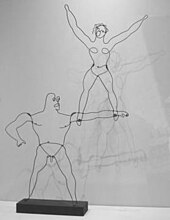






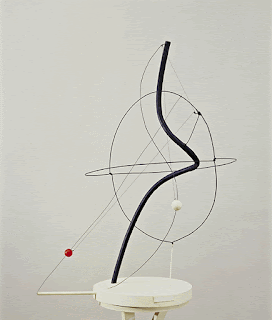






























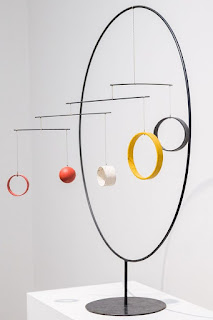



































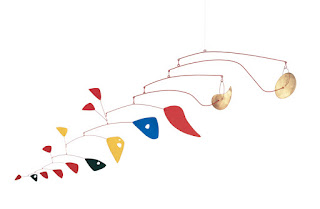






























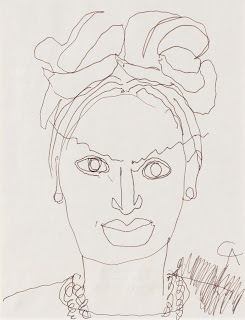

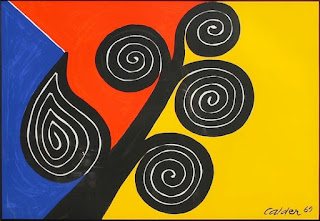






























































































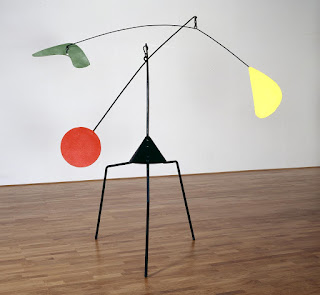









No comments:
Post a Comment